Perusing the dual exhibition currently on display at
Darat Al-Funun, visitors
are offered an intimate glimpse into the history of Amman across the 20th
century, and the private art collections of one of the city’s intellectuals.
اضافة اعلان
The exhibit, opened to the public at the
Khalid Shoman Foundation’s Darat Al-Funun last week, aims to preserve artistic memory and
provide answers to questions about Amman’s historical record through the theme
“Collections and Archives”.
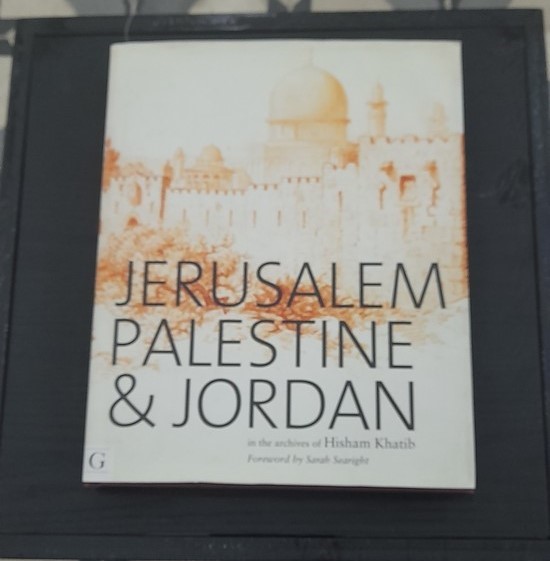
The pieces on display across Darat Al-Funun are
superbly curated to give visitors a sense of this theme. One exhibition is
titled “Topography of Place — Palestine and Jordan, Homage to Dr Hisham
Al-Khatib”, and the other “Revisiting Darat Al-Funun’s Main Building: Story,
History, and Restoration”.
“Through this dual exhibition, we invite visitors to
explore and learn more about unique collections and archival practices in
documenting an important epoch of the region’s history,” said Luma Hamdan, the
director of Darat Al-Funun.
Art and archives
“Topography of Place —
Palestine and Jordan” pays homage to a national figure, Dr Hisham Al Khatib, an
intellectual, engineer, economist, historian, avid collector, and honorary
member of Darat Al-Funun’s advisory board. Khatib, who passed away this year,
left behind as his legacy a large private art collection and a carefully
curated archive, with a selection of this collection on display at the
exhibition.
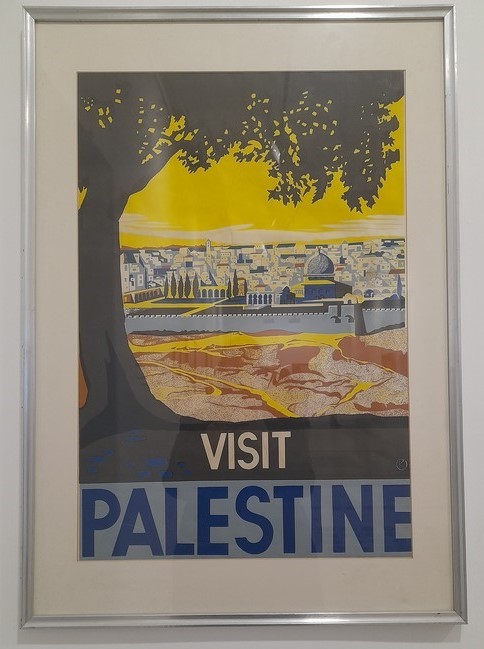
“We hope visitors take a look at the selection of
works on display and appreciate the huge efforts that Dr Hisham had put into
creating his collection that documents a troubled and sensitive period of our
history in the region,” Hamdan explained, referring to the time of Ottoman
rule, which is the main time period portrayed in Khatib’s curated works.
The collection is
the fruit of the historian’s perseverance and dedication to his career over a
period of more than 40 years. The thought-provoking, breathtaking pieces
include hundreds of watercolor and
oil paintings, thousands of etchings,
lithographs, and engravings, a selection of photographs, and maps, atlases, and
plate books.
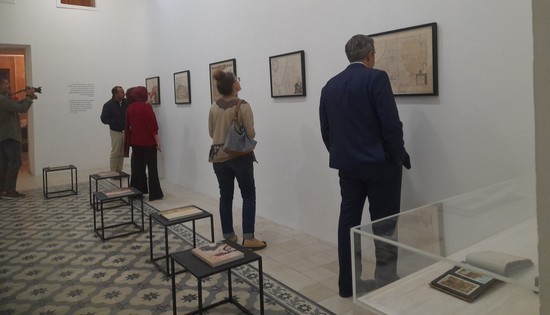
The works depict the people and culture of Palestine
and Jordan, as well as the relationship to the Holy Land itself through
geological, botanical, geographical, and cartographical themes. They feature
beautiful landscapes, including Nathaniel Everett Green’s “Panoramic view of
the Church of the Nativity, c.1884”, Johann Dugmore’s “The Dead Sea from the
Mount of Olives, 1835”, Henry Andrew Harper’s “Haifa and its Bay and Acre in
the distance”, and John Singer Sargent’s “Jaffa from the Sands”.
One of the lithographs on display is “A View of Acre
across Haifa Bay, Lithograph, 1880, Pierre Tetar Van Eleven”, and the exhibit
also features posters, such as “The Holy Land, Garden of the Gethsemane, Mount
of Olives, 1960, Conger Metcalf”. Various maps refer to the Holy Land as the
land of Canaan. The collection also includes publications, such as Khatib’s own
“Jerusalem, Palestine & Jordan”, and “Palestine and Egypt under the
Ottomans”.
A word from the collector
In the “Stories from Before”
segment, visitors can view a video recorded of Khatib speaking about how this
collection might help preserve a collective memory. In the collector’s own
words: “The pieces have been mainly acquired through knowledge, devotion, and
perseverance rather than financial clout. Therefore, the collection does not
contain the expensive exotic oriental scenes of the harem, the colorful souks,
and the hammams.”
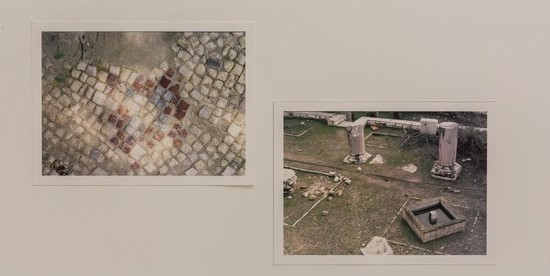
The exhibit’s emphasis on the Holy Land (Palestine
and Jordan) as an area of interest is rooted in Khatib’s own life journey. He
was born in Akka in 1937 and lived in
Jerusalem until 1974. Pieces in the
collection thus range from Jerusalem scenes to depictions of Palestine and
Jordan, and the region under Ottoman rule.
Khatib’s extensive understanding of the region’s
antiquities and topography was crucial in locating and acquiring valuable and
rare pieces. “I have tried to select the rarest paintings, lesser-known views,
and more valuable books and photographs, avoiding what is better known”, said
the collector in his video.
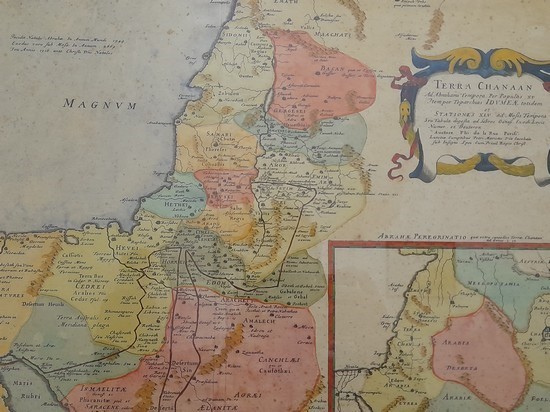 From private
residence to home for the arts
From private
residence to home for the arts
After browsing through these
visual and archival treasures, visitors then proceed to the second exhibit,
“Revisiting Darat Al-Funun’s Major Building: Story, History and Restoration”,
which showcases the journey of the art center’s main building through time, and
the preservation of its archaeological site.
The main building of Darat Al-Funun was constructed
at the beginning of the 20th century by Nimr Pasha al Hmoud beside a Byzantine
church, where a Roman Temple had once stood. His home later served as a
residence for the British commander of the Arab Legion Colonel Peake, and was
visited by T.E. Lawrence in 1921.
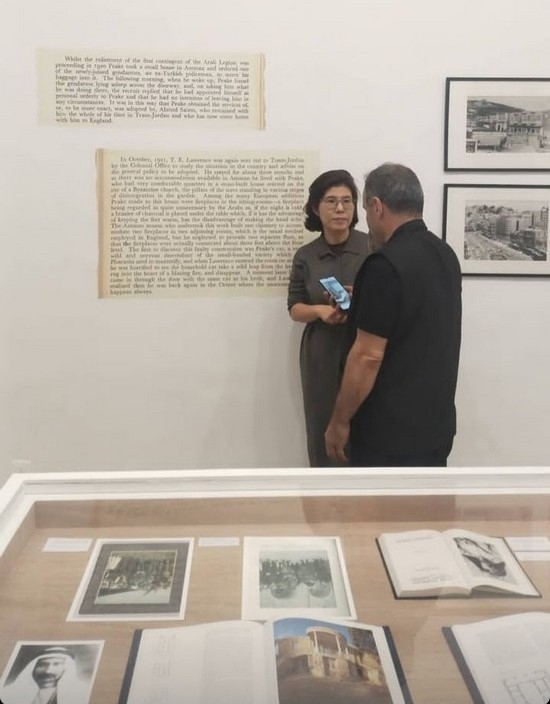
The home was eventually converted into a club for
British officers in the time of John Bagot Glubb, who remained the commander of
the Arab Legion until the Arabization of the army in 1956 by King Hussein.
After being leased to the government in 1939, the building hosted different
entities, including the office of the Prime Minister and a school for girls. It
then lay vacant for a span of 15 years, after which it was purchased and
renovated by the Shoman Foundation in 1992 to become the main building of Darat
Al-Funun, a cultural monument of great prestige.
Amman: A living antiquity
The exhibition features
never-before-released images by architect Ammar Khammash which detail how the
heritage building changed roles over time, to eventually become the home for
arts and culture in 1992.
The exhibition also tells the story of Amman’s
expansion in the middle of the 20th century, with prominent families settling
in the
Jabal Luweibdeh neighborhood.

Standing on Darat Al-Funun’s terraces, where one can
view Amman’s architecture, sweeping hills, and bustling streets, gazing at
sun-bleached Roman ruins, the story of the building seems to play out in real
time. Several visitors noted that history seemed suspended in the
archaeological atmosphere of ancient remains alongside everyday Jordanian
scenes. In a sense, while Darat Al-Funun is a vast art institute, Amman is a
living antiquity.
The exhibition, which runs through January 31, 2023, will be
accompanied by a program of public events related to archives and historical
records, collections, and documents, starting with a theater performance by
Palestinian artist Hussam Abu Eisheh, and including the launch of a film
program, talks, and an open call for innovative projects at Darat Al-Funun’s
lab under the exhibit theme, “Collections and Archives”.
Read more Culture and Arts
Jordan News



